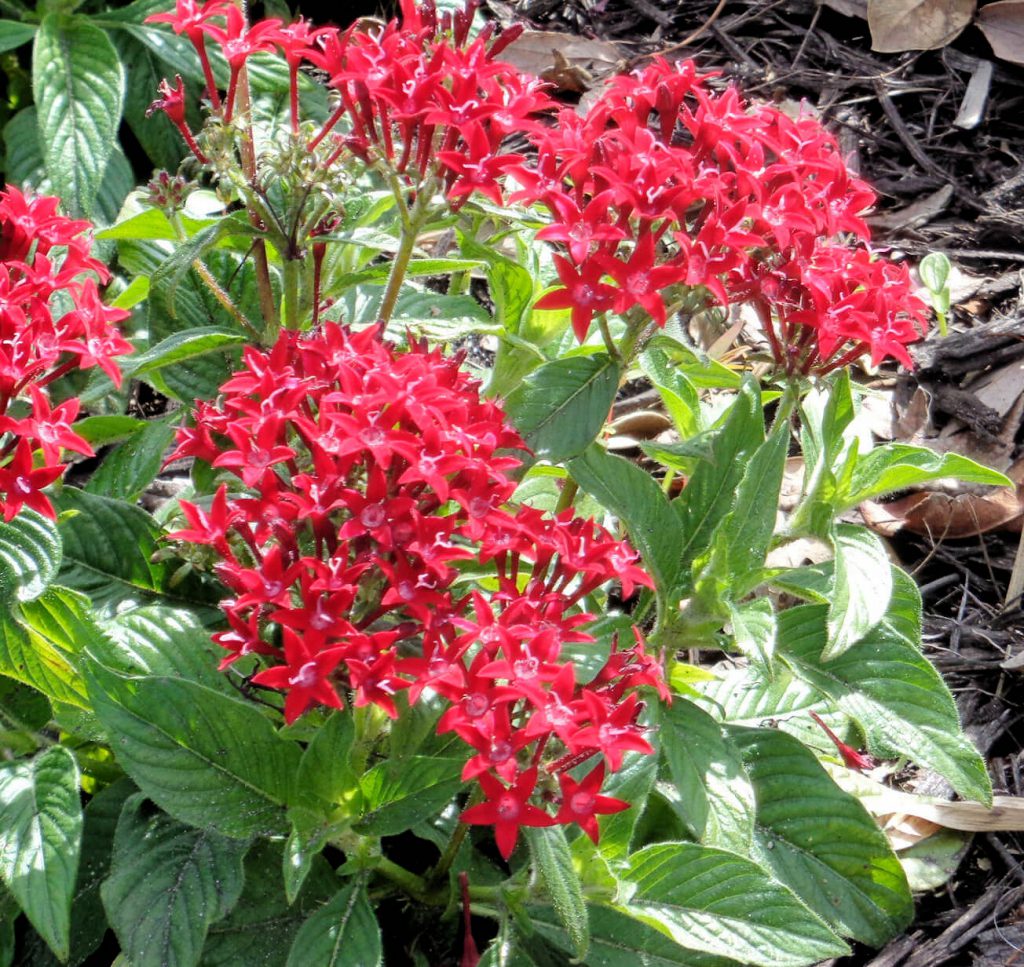By Ralph E. Mitchell

If you like perennial plants that flower almost all-year round, you may be interested in pentas. Named after the Latin word for “five” due to the five-petalled flowers, pentas have bright flowers that attract butterflies, hummingbirds and on-lookers alike. While also called Egyptian Star Clusters, these originally east African plants grow great in our area. Useful in planters, as cut flowers, in hanging baskets and as accent plants, pentas may have a place in your landscape.
Pentas lanceolata, or just plain pentas, is really an evergreen sub-shrub that can grow up to three-feet tall. There are other varieties to choose from including low-growing and mounding types of about fourteen-inches in height. Larger types can get so tall that they can actually fall over. Colors range from red, white, lavender, purple and pink. The red and darker pinks types are particularly attractive to hummingbirds. The fuzzy haired leaves frame the tubular flowers that are grouped together in large clusters. In fact, one plant can have upwards of twenty clusters of flowers at a time. Pentas should be planted in a full sun to part shade location with well-drained soil. Although full sun will promote the most flowers, pentas can actually produce some flowers with as little as three hours of sun per day. Mulch to conserve moisture, but don’t plant pentas in sites where soggy soil can be a problem. Plant on eighteen-to-twenty-four-inch centers when installed for mass plantings. One convenient characteristic in the management of pentas involves their ability to self-deadhead. Ordinarily, many flowering plants require removal of old flower heads in a process known as “deadheading” – not pentas!
Plant pentas in combination with lantanas, ixoras, blue salvias, or in front of other evergreen shrubs such as hollies, ligustrum, wax myrtles or junipers for a stunning landscape feature. An added bonus – as cut flowers, pentas can last up to five days in a vase. Use this plant in combination with summer annuals as a subject for large containers. Pentas are perhaps the most popular flowers in the garden as far as butterflies are concerned, so if you are into butterfly gardening, this is a popular nectar source. Pentas can be easily propagated by rooting cuttings or from seeds.
If you like plenty of flowers on a perennial plant, try pentas! For more information on all types of flowering plants suitable for our area, or to ask a question, please visit https://www.facebook.com/CharlotteMGLifeline/. Ralph E. Mitchell is the Director/Horticulture Agent for the UF/IFAS Charlotte County Extension Service. He can be reached at 941-764-4344 or ralph.mitchell@charlottecountyfl.gov.
Resources:
UF/IFAS Gardening Solutions (2021) – Pentas.
Gilman, E. F. & Shiffit, S. (2014) Pentas lanceolata Pentas. The University of Florida Extension Service, IFAS.
Klingaman, G. (2002) Plant of the Week: Butterfly Pentas. The University of Arkansas Cooperative Extension Service.
Winter, N. (2005) Southern Gardening – Choose Pentas for Outstanding Color. University of Mississippi.
Rodriguez, D. (2006) Butterfly Pentas. Texas A&M University System, Texas Cooperative Extension Service.
 1
1

Comments are closed.